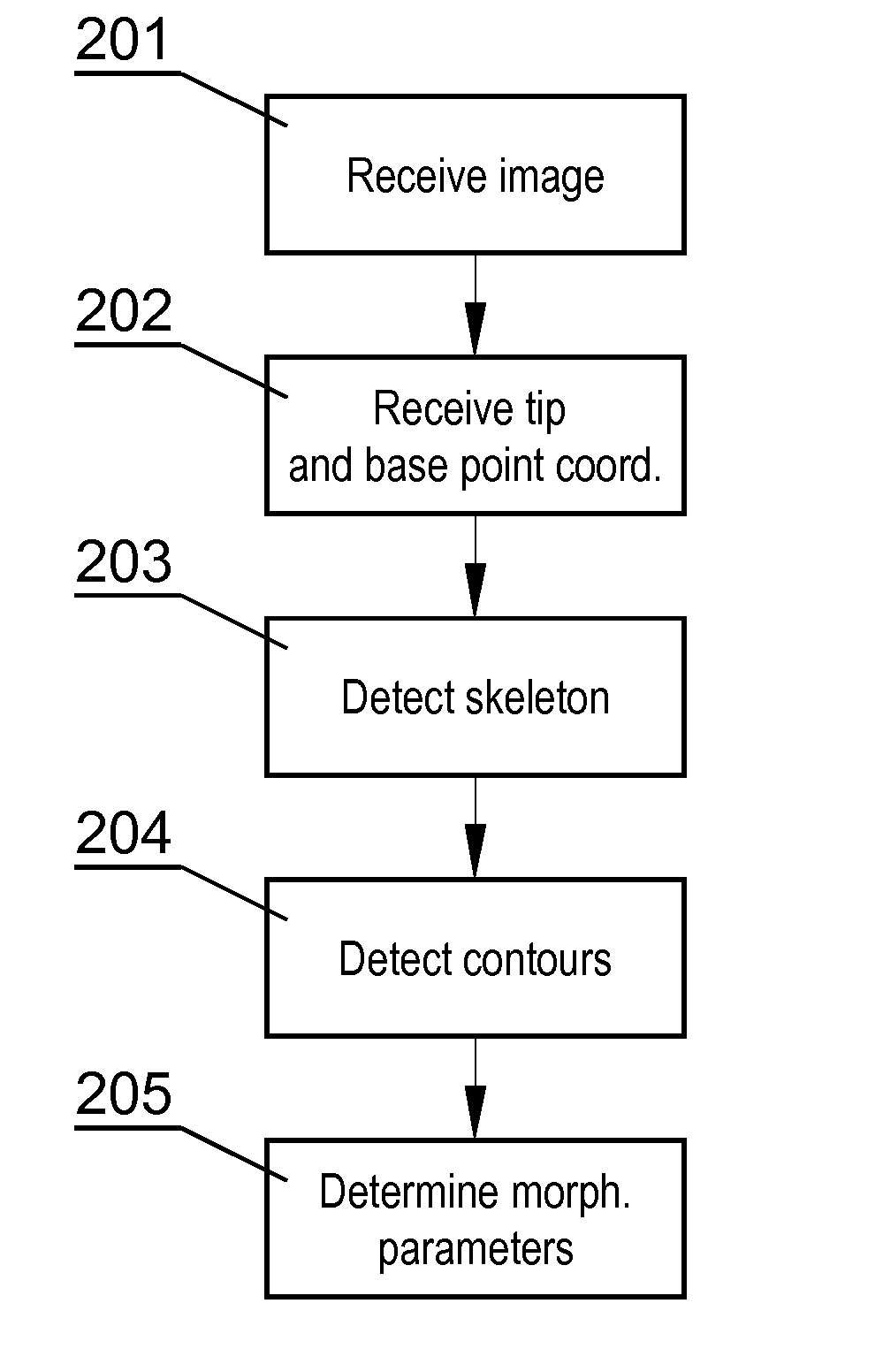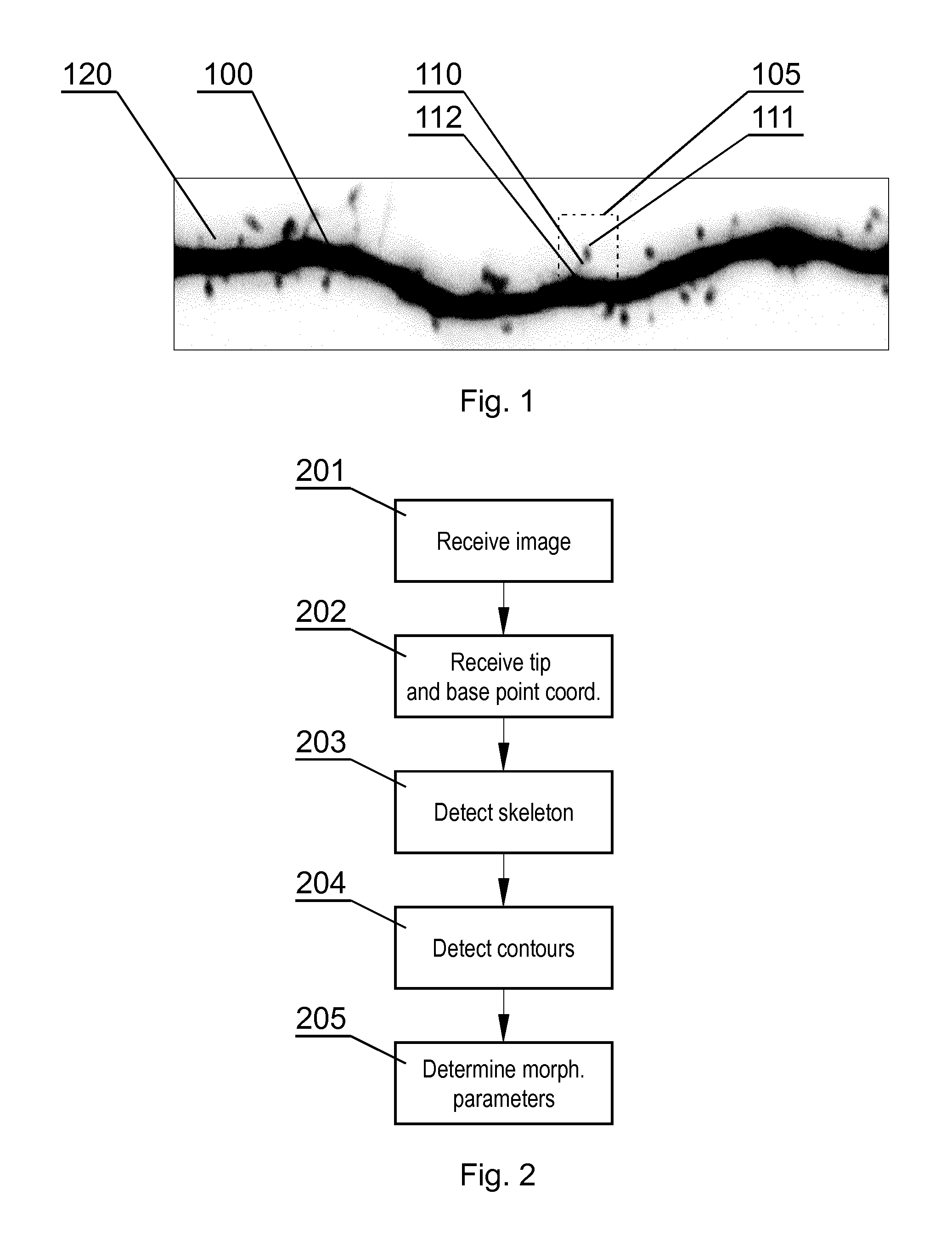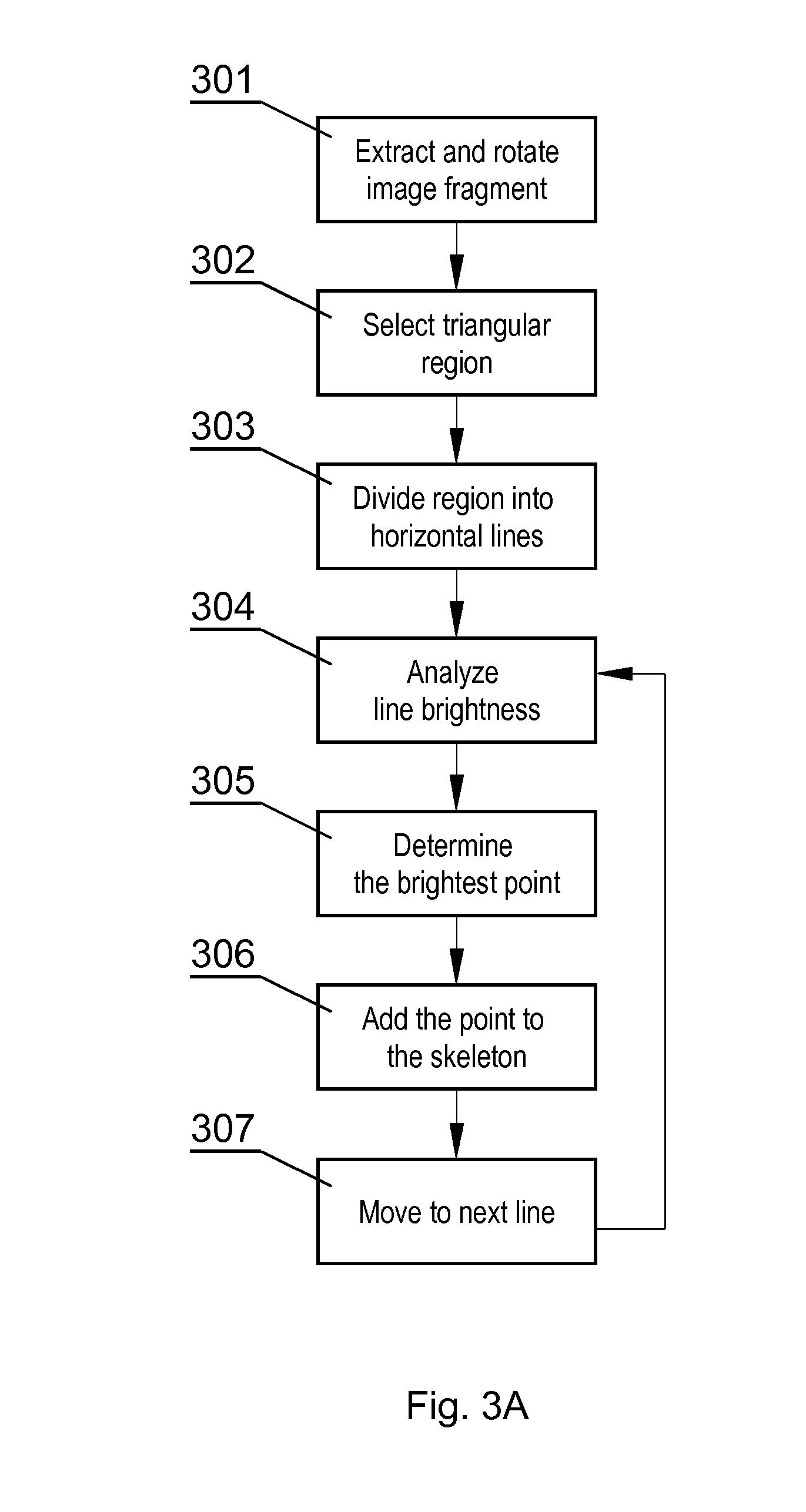Method and a system for processing an image comprising dendritic spines
a technology of dendrite spines and images, applied in the field of image segmentation and processing, can solve the problems of inability to accurately detect the contours of dendrite spines, inability to accurately detect dendrite spines, and inability to provide a detailed description of how to precisely detect the spine contours
- Summary
- Abstract
- Description
- Claims
- Application Information
AI Technical Summary
Benefits of technology
Problems solved by technology
Method used
Image
Examples
Embodiment Construction
[0026]FIG. 1 shows an exemplary image comprising a dendrite 100 with dendritic spines 110, shown as an inverse image to improve the visibility. The image has been acquired by a fluorescence confocal microscope, with resulting pixel size 70 nm. The presented embodiment relates to a 2-dimensional image, but it can be used with 3-dimensional images in an equivalent manner as well.
[0027]FIG. 2 shows the steps of the method according to the invention. The method starts in step 201 by receiving the image to be processed, such as the confocal microscope image shown in FIG. 1. Next, in step 202, coordinates of two points are received, namely the coordinates of the tip point 111 and the base point 112 of a dendritic spine which is to be segmented from the image, as shown in FIG. 1. The coordinates of the tip and base points may be defined by another algorithm or may be defined manually by the user. Next, in step 203, the skeleton of the dendritic spine is detected, as shown in FIG. 3. Then i...
PUM
 Login to View More
Login to View More Abstract
Description
Claims
Application Information
 Login to View More
Login to View More - R&D
- Intellectual Property
- Life Sciences
- Materials
- Tech Scout
- Unparalleled Data Quality
- Higher Quality Content
- 60% Fewer Hallucinations
Browse by: Latest US Patents, China's latest patents, Technical Efficacy Thesaurus, Application Domain, Technology Topic, Popular Technical Reports.
© 2025 PatSnap. All rights reserved.Legal|Privacy policy|Modern Slavery Act Transparency Statement|Sitemap|About US| Contact US: help@patsnap.com



